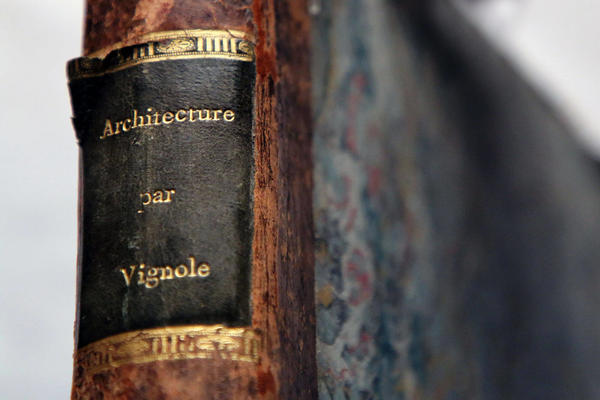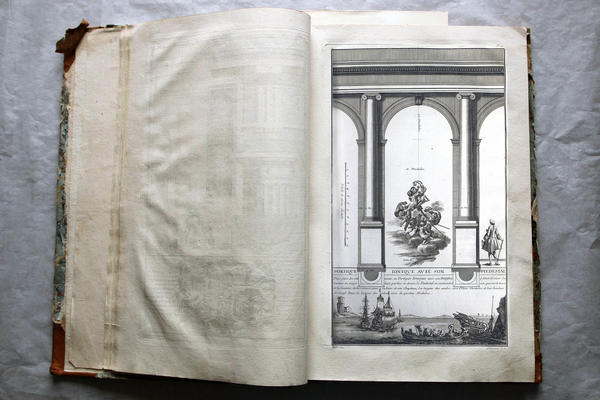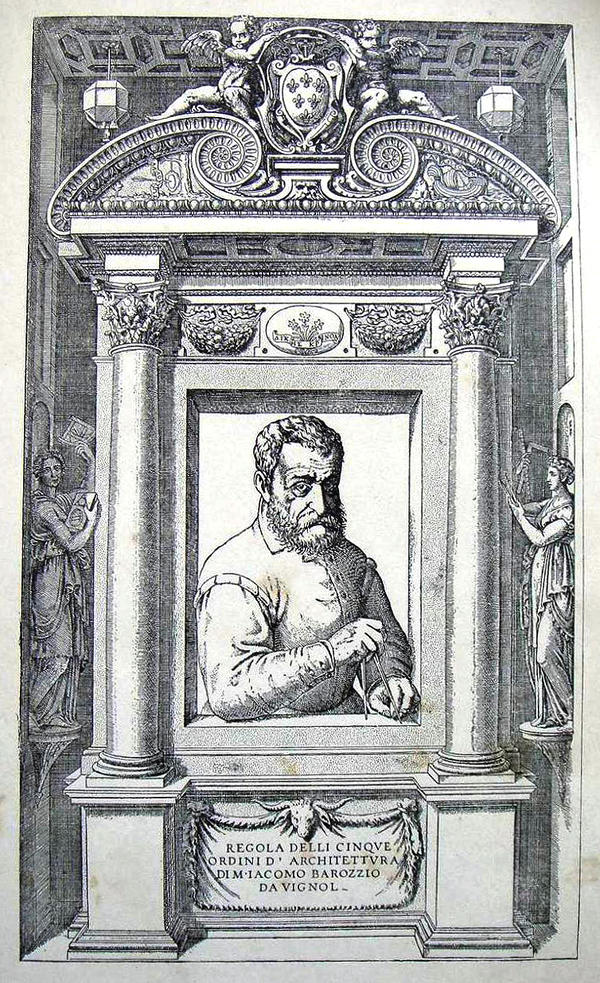During the period of three hundred years, European architects studied the order system through Vignola’s treatise. His main theoretical work was first printed in Rome in 1562. This album consists of engravings and explanations to them; there are signatures of the artists and engravers.
1 / 7
#1
Giacomo Barozzi da Vignola (1507—1573)
A New Book, or The Five Orders of Architecture…
Paris, 1767
#2
#4
The two-page spread shows the “Ionic Portico with Pedestal”, with explanations regarding the proportions of its various elements: “To create galleries, or the Ionic Portico with Pedestal, you need to divide the height by twenty-eight and a half parts; the Pedestal will contain six parts, which is a third of the height of the Column, with the base and the Capital; the width of the openings will be equal to eleven Modules, their height — to twenty-two, the width of the pillars will be four Modules”.
#6
Vignola’s architectural works are mostly made in the style of mannerism. Along with Andrea Palladio and Sebastiano Serlio, he is considered one of the most prominent architects of his era. Vignola’s central works — Villa Farnese at Caprarola and the Church of the Gesù in Rome — are heralds of the Baroque style in architecture.
First published in 1562, Vignola’s treatise ‘The Five Orders of Architecture’, due to a clear and consistent presentation of the subject, became a canonical textbook for many architectural schools for centuries, having undergone countless translations and reprints.
First published in 1562, Vignola’s treatise ‘The Five Orders of Architecture’, due to a clear and consistent presentation of the subject, became a canonical textbook for many architectural schools for centuries, having undergone countless translations and reprints.
Portrait of Giacomo da Vignola (the real name is Jacopo de Barozzi) published in the first edition of ‘The Five Orders’ of 1562.
читать дальшескрыть
A New Book, or The Five Orders of Architecture…
4
Открыть в приложении
Поделиться










